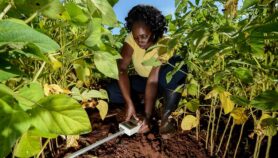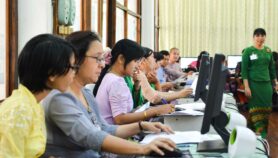Send to a friend
The details you provide on this page will not be used to send unsolicited email, and will not be sold to a 3rd party. See privacy policy.
An online tool that tracks local Internet searches could help health officials in developing countries respond more quickly to dengue fever outbreaks, according to a study.
Researchers looked at web-based search data on dengue in Bolivia, Brazil, India, Indonesia and Singapore between 2003 and 2010 and found that search queries correlate well with actual dengue cases.
The tool, Google Dengue Trends, was inspired by Google Flu Trends, a similar service developed in 2008 to detect flu outbreaks, according to Emily Chan, researcher at the US-based Children’s Hospital Boston and the lead author of the article, published in PLoS Neglected Tropical Diseases last week (31 May).
The intention is to complement, rather than replace, traditional dengue surveillance, said Chan, adding that "it could serve as a stepping stone for prompting further investigation when there are unexpected increases in dengue-related searches".
Chan said most traditional dengue surveillance systems depend on the recording of hospitalisations, which may be slowed down by bureaucracy and lack of resources. "In contrast, web search query data is available for analysis within a day," she said.
Google Dengue Trends is freely accessible online so anyone interested in the dengue status of the five countries can access the data. It maps the search data on a scale from minimal to intense, picking up on people searching for more information about the disease, its symptoms or treatments.
But since it depends on sufficient web search volume, its use may be limited in rural areas and developing nations that tend to have limited or no Internet access, the study says.
Mario Navarro, an entomologist at the Federal University of Parana, Brazil, welcomed the tool. But he said that authorities in dengue-prone areas should always be prepared for outbreaks, and not become complacent if the tool shows few online searches.
"Local governments might feel less pressured [when searches are low] and ease vector control. When people start to look for information, the problem is already there," he said.
Last year, Indonesia had 150,000 cases of dengue fever and more than 1,300 deaths, according to the country’s health ministry.
Heri Yandi, a doctor at the Salak Public Hospital in Indonesia, said the tool could help health professionals make basic preparations to respond quickly to an outbreak. Individuals could also use the application to look up a location they were planning to travel to and "reschedule or arm themselves against the disease. So it could stave off casualties."
Susi Indraswati, a medical worker at the in North Sumatra, stressed the need for early warning of dengue outbreaks, given that health agencies in rural areas can update case numbers as infrequently as once a month or year.
"There are places where data are rarely updated and unreliable, one of them is Indonesia," Susi said, adding that the tool should pose a motivation for Indonesia’s health institutions to keep their data reliable and up to date.
References
PLoS Neglected Tropical Diseases doi 10.1371/journal.pntd.0001206 (2011)













